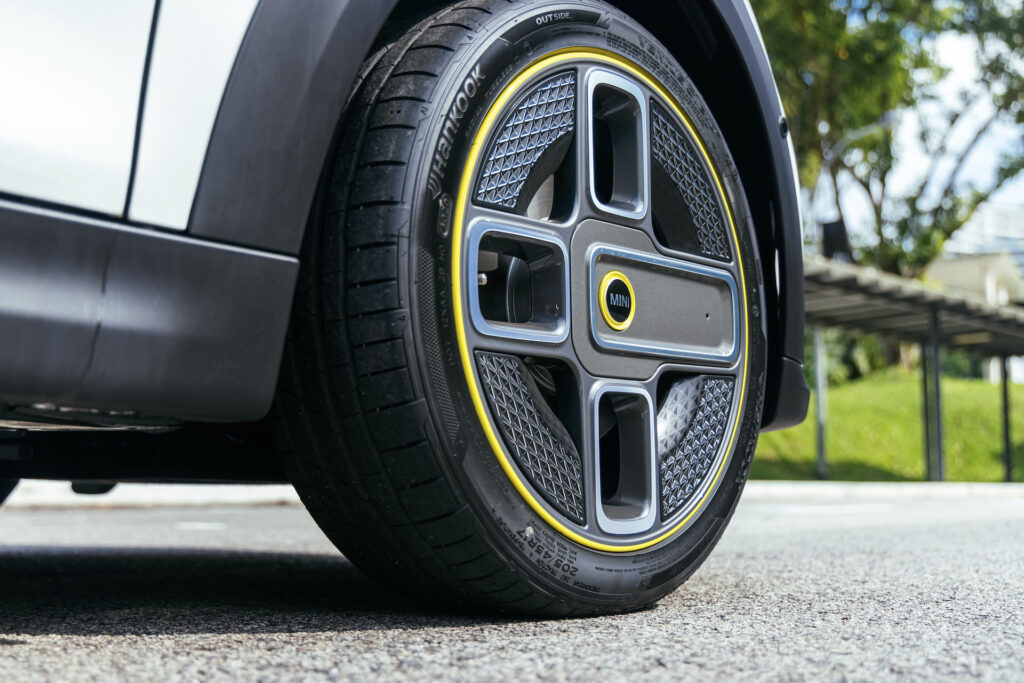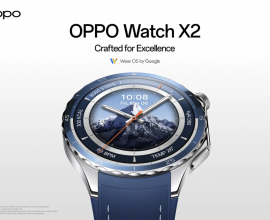Barely a year after its launch, the first EV from MINI is updated with styling and interior improvements. We take the new MINI Electric out for a closer look.
In many ways, the new MINI Cooper SE aka MINI Electric reminds me of the iPhone 13. In both cases, it takes a trained eye to distinguish the old from the new. More importantly though, it doesn’t feel too long since the previous one made its debut. In fact, we made a video about the previous MINI Electric only last November.
This is significant as it means that the car industry has caught up with the world of electronics in terms of product life cycles. Previously, European automakers would take 6-7 years to churn our a new model, while Japanese manufacturers would take 48 months.
Perhaps… the battery-powered MINI is more of a gadget than car? Either way, it’s a good excuse to be reaquainted with this electric hatchback.
To bring us back to the iPhone analogy, if you already have the MINI Electric in your garage, I’ll cut to the chase to assure you that the new car feels more or less the same to drive.
As the power output, performance figures and battery capacity remain identical to the previous model, it allowed me to jump straight to the updates of the new, new MINI Electric.

MINI Electric recharged and refreshed.
The latest MINI range has gone through a “Life Cycle Impulse” or LCI which is BMW-speak (it’s parent company), for facelift or a product refresh. This usually happens a few years after the all-new model is launched. To be precise, it’s actually the second LCI for the current F56 generation of the 3-door MINI.
The easiest way to tell that you’re looking at the latest MINI is by its black grille accent trim that makes the car look like it has grown a goatee. Like many of its owners…

The rest of the exterior is a delightful embarrassment of riches for Easter eggs designed to clue you in to its electric powertrain. The wheels, for example, are unique to the MINI Electric. Three of the four spokes feature rectangular voids that resemble a three-pin electrical socket – UK standard, obviously.

Next, the round badge on the rear of the car looks innocuous until you notice the chrome trim forms a letter ‘E’ (for electric, presumably?). Similarly, the yellow insert resembles a stylized plug.

Inside, the occupants can look forward to a new, fancy trim that extends to the LED bezel on the central display. The driver gets a redesigned steering wheel that’s cleaner-looking than the previous game console-inspired multi-function controls.
While the new multi-function steering wheel looks altogether more grown-up, a spirited drive on a twisty road shows its shortcomings. When charging into a long bend, for example, the g-forces start loading up on the fleshy part of the driver’s palm, just below the thumb.
This inadvertently causes that part of the hand to press against the volume control and raises the music to startling levels! Given where the indentations for the driver’s thumb are on the steering wheel rim, it’s not easy to avoid the accidental operation.

On this note, a pair of shift paddles would be nice to have on this MINI. Instead of changing gears, the paddles could be used to vary the level of generative braking on the fly.
MINI Electric party tricks.
Within the same week, I had a chance to drive the BMW iX3 which is an EV Sport Utility Vehicle (SUV). Driving this pair back-to-back, it is obvious where MINI shares some commonalities and where the parent company still reserves some of the best goodies for its own brand.
One of the more useful features I found on the BMW iX3 was adaptive brake regeneration. Using a combination of GPS and onboard cameras that recognised traffic lights, stop signs and other vehicles in front, the system is clever enough to vary the level of energy recovery through braking.
When you’re coasting on an expressway for instance, the car just rolls along with nary an input from the accelerator pedal. As you approach a corner or traffic light, for example, the system seemingly slows the car down a tad just before the driver needs to hit the brakes.

This feature, however, is not found on the MINI Electric. Rather, it’s more dependent on the driver making most of the input.
Both cars have their respective smartphone apps that let the driver monitor the state of charge, lock the doors, or even locate the car in case you forget where you’ve parked it. Undoubtedly, however, most locals will love the ability to switch the air-conditioning on for up to 30 minutes before they enter the car. This is really handy as it lets you step into a cool, climate-controlled cabin even if the car’s been parked our in the sun.

There are some party tricks that the BMW twin has that the MINI doesn’t. If the driver doesn’t fancy lugging a bulky key in his pocket, he could programme his iPhone or his Apple Watch as a duplicate digital key.
No such luck for the MINI, however.
Another goodie that the MINI misses out on is the ability to remotely activate the parking cameras around the car to virtually stitch a 360-degree image of the surroundings where the vehicle is parked.
My last gripes about MINI’s have-nots are its infotainment system and the wireless charger in the centre armrest. Apple CarPlay now comes standard with the latest LCI of the MINI range. For good measure, the MINI Electric even feature wireless Apple CarPlay. Android users on the other hand, are out of luck as yet again, the privilege of Android Auto is for BMW only.

For some reason, however, the wireless Apple CarPlay system was a bit of a hit-and-miss affair when it came to connecting my iPhone 12 Pro Max. It would work fine one day, but require a USB connection the next.
Cars that have wireless Apple CarPlay should be also be fitted with wireless chargers as a compliment. To the MINI’s credit, it does feature this. However, the centre armrest that houses this charger is too narrow to fit any phone with a 6-inch screen or larger. It seems you’ll need an iPhone mini for this MINI…

In isolation, the MINI Electric driver may not be aware of what he doesn’t have, and instead blissfully enjoy the driving experience it offers. The Pirelli Cinturato P7 tyres it’s fitted with, suit the car perfectly. Even in heavy rain, the Italian rubbers offer ample grip to impart a stable, confidence-inspiring drive.
battery size: bigger isn’t always better.
I’m also starting to come around to the idea that bigger isn’t always better when it comes to EV battery capacities. The MINI Electric, by today’s EV standards, might lack a little in the range department, on paper with just 232km. These days, many EVs are already knocking on the door of 400km or more.

The problem with EVs is that firstly, the car inherently carries more weight, no thanks to the bigger battery. This is detrimental to a car’s handling and performance. So it’s understandable why a brand like MINI, which is known for its fun-to-drive cars chose a smaller and lighter battery pack.
Secondly, they tend to engender charging procrastination. Thirdly, when it comes time to charge the said battery, its owner will need to spend more time at the charging point.

Speaking as an apartment dweller, the increasing numbers of charging points popping up in carparks at shopping malls and commercial buildings have gone a long way to allay my range anxiety.
Lastly, when the time comes for a top-up, less than 30 minutes at a DC 50 charging point will see the battery level go past 85 percent, which is psychologically satisfying.

Unless you’re willing to splurge on something upwards of $250k, EV options south of this price point tend to feel rather homogenous. At $183,888, the MINI Electric is hardly cheap either, but at this price point, you won’t find anything else that offers more in terms of driving fun and style.
need to know:
MINI Cooper SE.
Power: 135kW (184hp) @ 7,000rpm electric motor
Torque: 270Nm @ 100-1,000rpm
Transmission: Single-speed, FWD
Top Speed: 150km/h
0-100km/h: 7.3 seconds
Battery: 93.2Ah, 350.4v Lithium-ion
Capacity: 32.6kWh
Range: 232km
Efficiency: 15.2 kWh per 100km
VES banding: A1
Charging: (10% to 80%)
DC 50kW: 35min
AC 11kW: 2h 30min
Base price: $183,888 with COE
+ cute styling, covenience features
– iffy wireless infotainment, steering wheel controls
futr rating: 4/5
Contact: Eurokars Habitat
Enjoyed this story? Check out more EV reviews in our Rides section!




